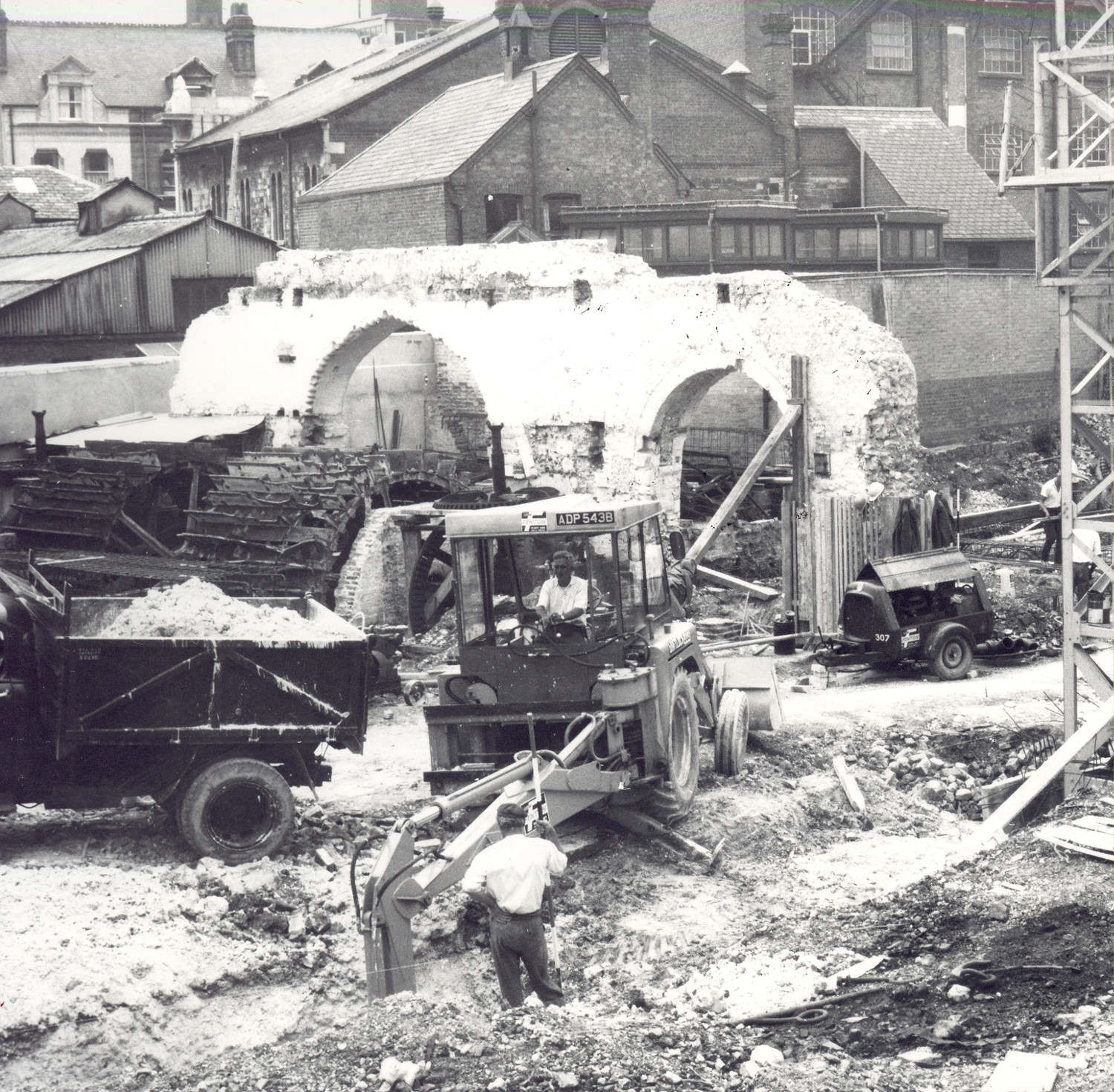This is a guest blog written by the Mills Archive.
We’ve come a long way in how we feed our towns, cities and nations. The story of flour milling is a fascinating one in how it has evolved from hand-powered querns in 6,000 BC, to traditional windmills and watermills, up to massive computer-driven roller mills of the present day. Reading and the surrounding area has seen many changes in how it has fed its population. The town achieved fame with the successful Huntley & Palmer biscuit-making business, which used locally-sourced flour to great effect.
Here at the Mills Archive, we were delighted to put together an exhibition for display in Reading Museum. We preserve the world’s milling images and documents and make them freely available to the public. We tell the story of milling as well as the people who have loved, lived and worked in mills. While our remit is global, we are based in Reading and feel a strong connection to our local roots. Established in 2002, we are a registered charity and a nationally accredited archive. Our volunteers work tirelessly to digitise the records so that they are preserved for generations to come.

The Mill Archive team installing the exhibition
Our exhibition includes photographs, paintings and documents showcasing some of the local mills that once dominated the landscape, towns and villages. Many of you will have seen Abbey Mill arch, the last remains of the mill lingering over the Holy Brook, which continued working up to the 1950s. The stark black and white photograph in our exhibition shows the arch and waterwheels during the demolition of the mill in 1964.

The demolition of the Abbey Mill (Mills Archive)
In contrast, a painting from the Museum’s own collection captures an idyllic scene of St Giles Mill. Painted around the late 1890s, the mill produced flour for Huntley and Palmers up to the 1960s.
One remaining mill that is open to the public and producing flour is the picturesque Mapledurham Watermill, just up the road on the outskirts of Reading. Mapledurham Watermill's history dates back to the Domesday Book. In more recent times it has been the set for various films and television series, “The Eagle has Landed” being the most remembered film. The mill has also featured in Midsomer Murders, Inspector Morse and recently Taboo. Tools used in the mill are on display. These belonged to the miller, who was the only lady watermiller in the UK for 30 years up to 2010!
We really hope you will come and see our exhibition, which includes a wide range of intriguing artefacts, old photographs and documents. The exhibition is open until the beginning of September. We have also produced a booklet that covers the story of flour milling, which you can purchase in the Museum gift shop for £5.

From Quern to Computer booklet
The Mills Archive is your archive. We are shaped by the information you give us. If you would like to find out more about the history of the local area and further afield, or you have something you wish to contribute to the story of milling, please visit our website www.millsarchive.org or email us at friends@millsarchive.org You can also find us on facebook at www.facebook.com/millsarchive. Or pop in and see us at Watlington House, Watlington Street, Reading, RG1 4RJ.
The exhibition, “From Quern to Computer”, forms part of our Heritage Lottery Fund-supported project of the same name. Thanks to National Lottery players, the HLF invests money to help people across the UK explore, enjoy and protect the heritage they care about - from the archaeology under our feet to the historic parks and buildings we love, from precious memories and collections to rare wildlife.






